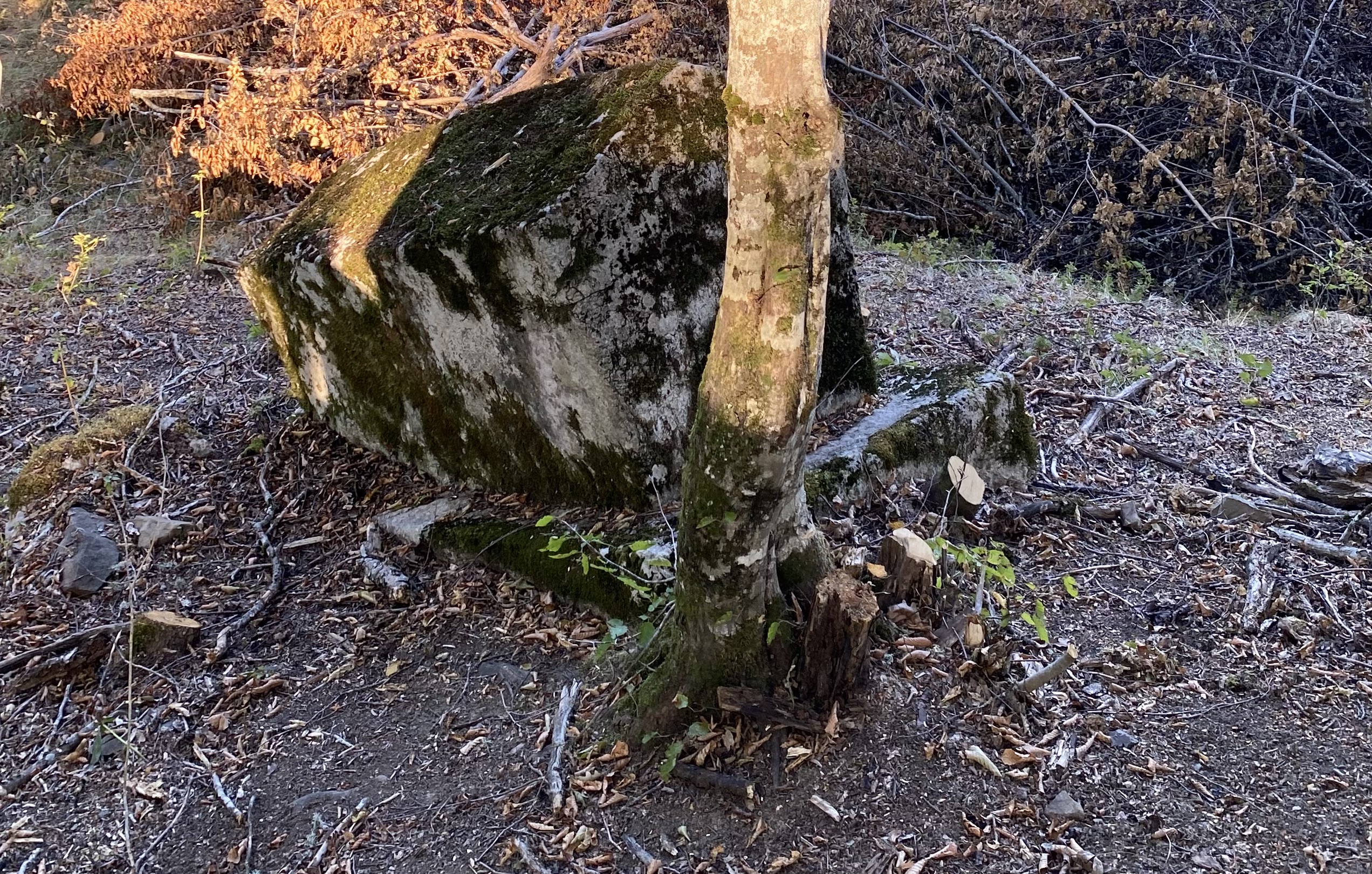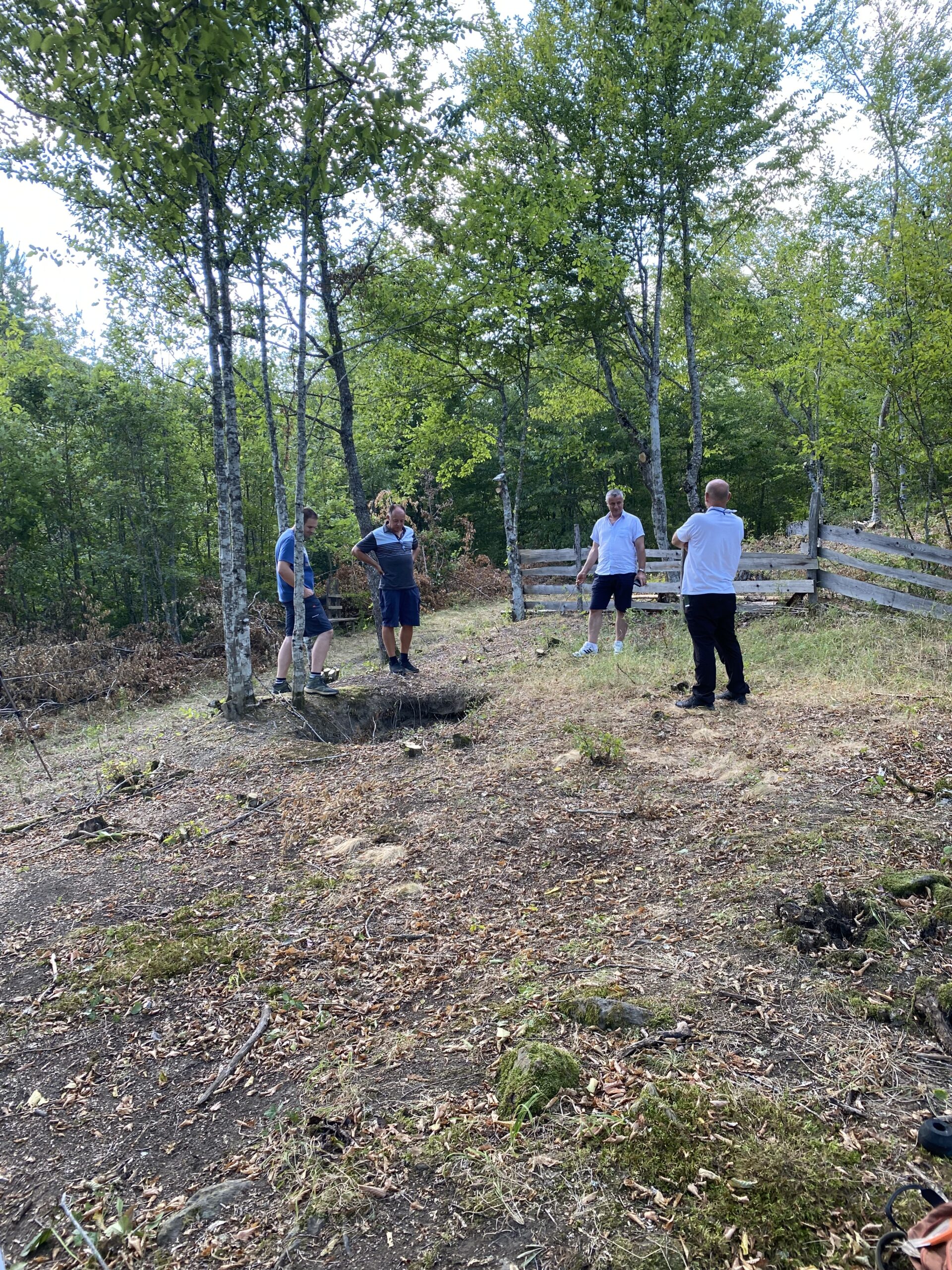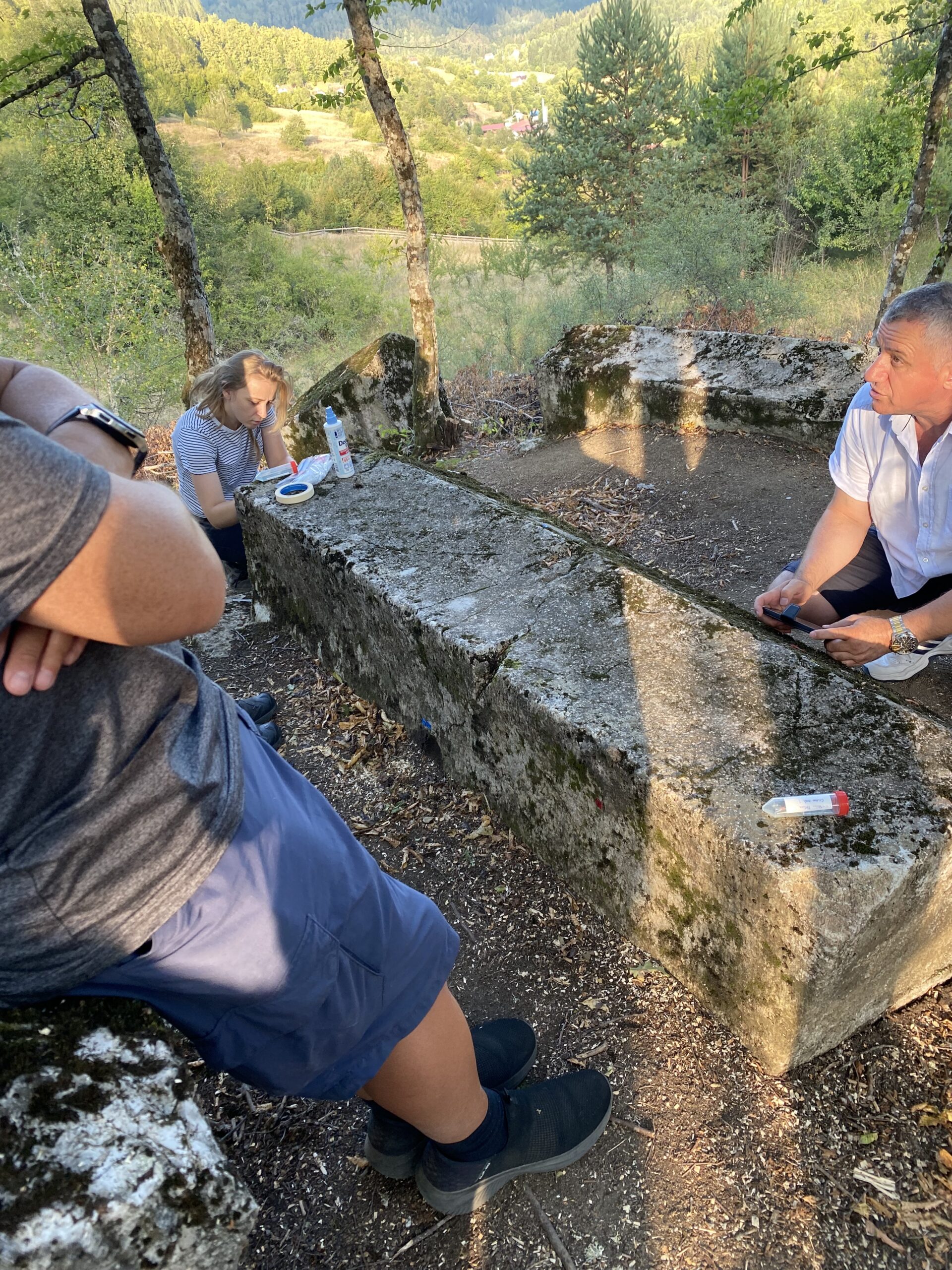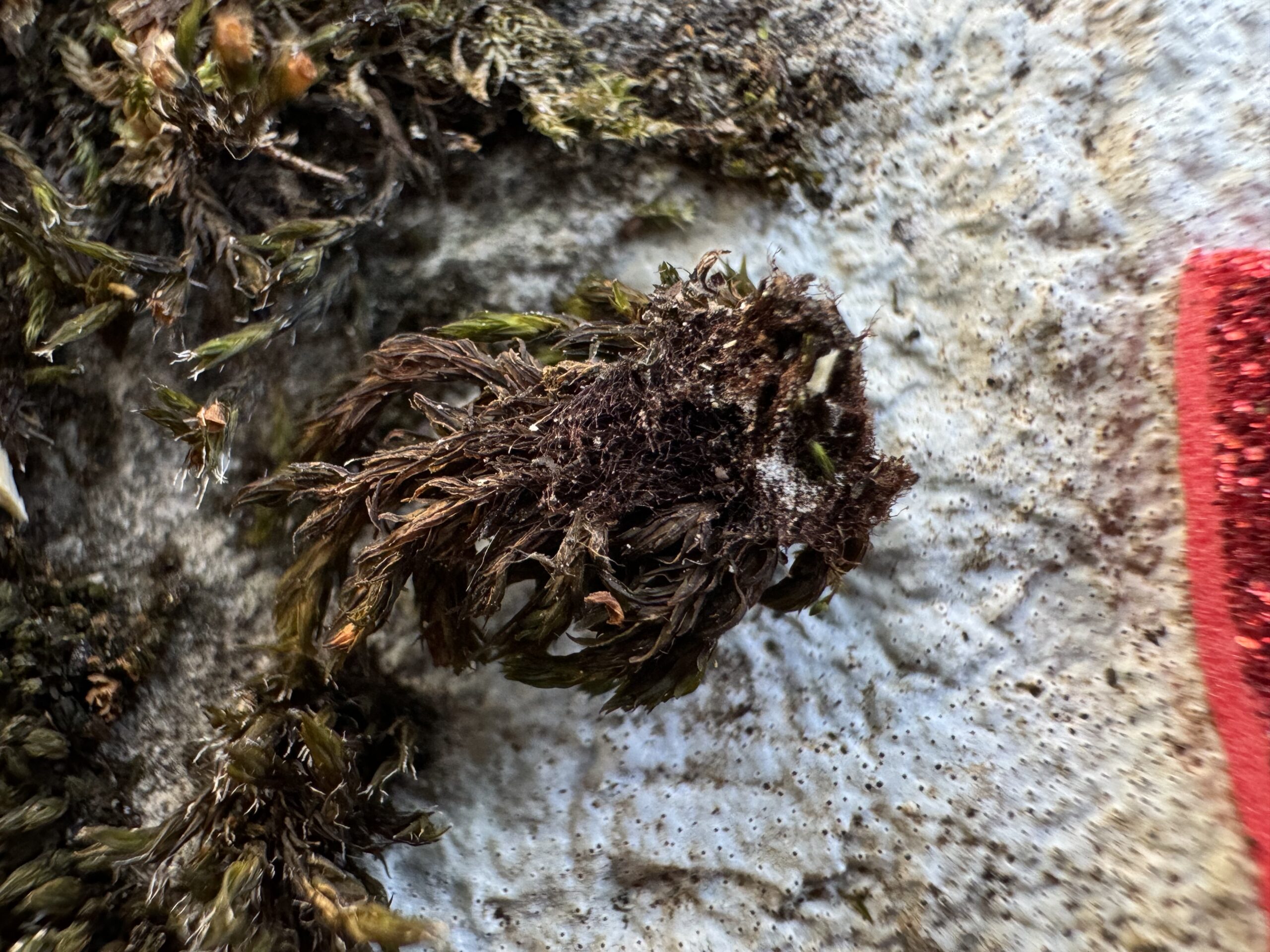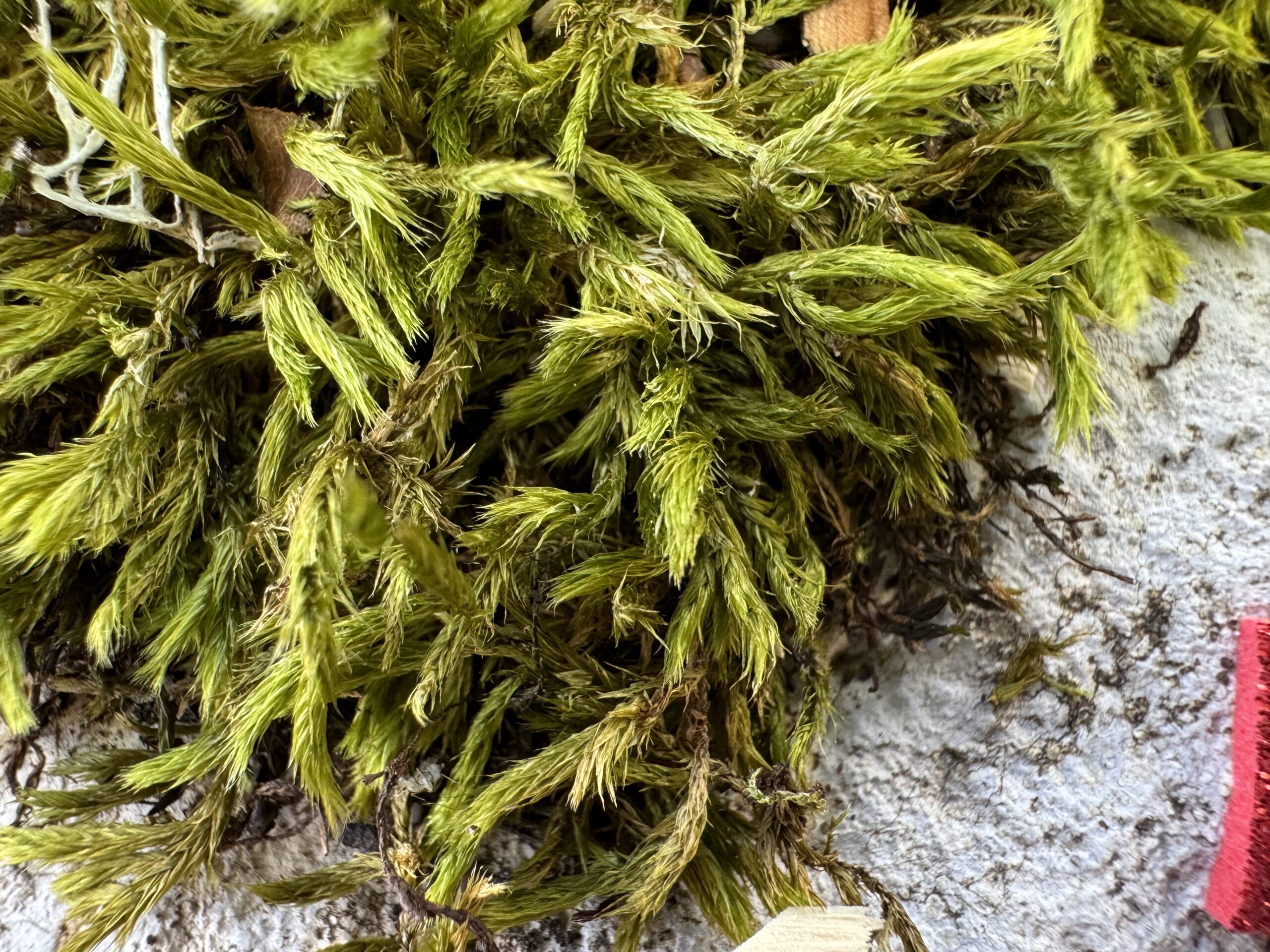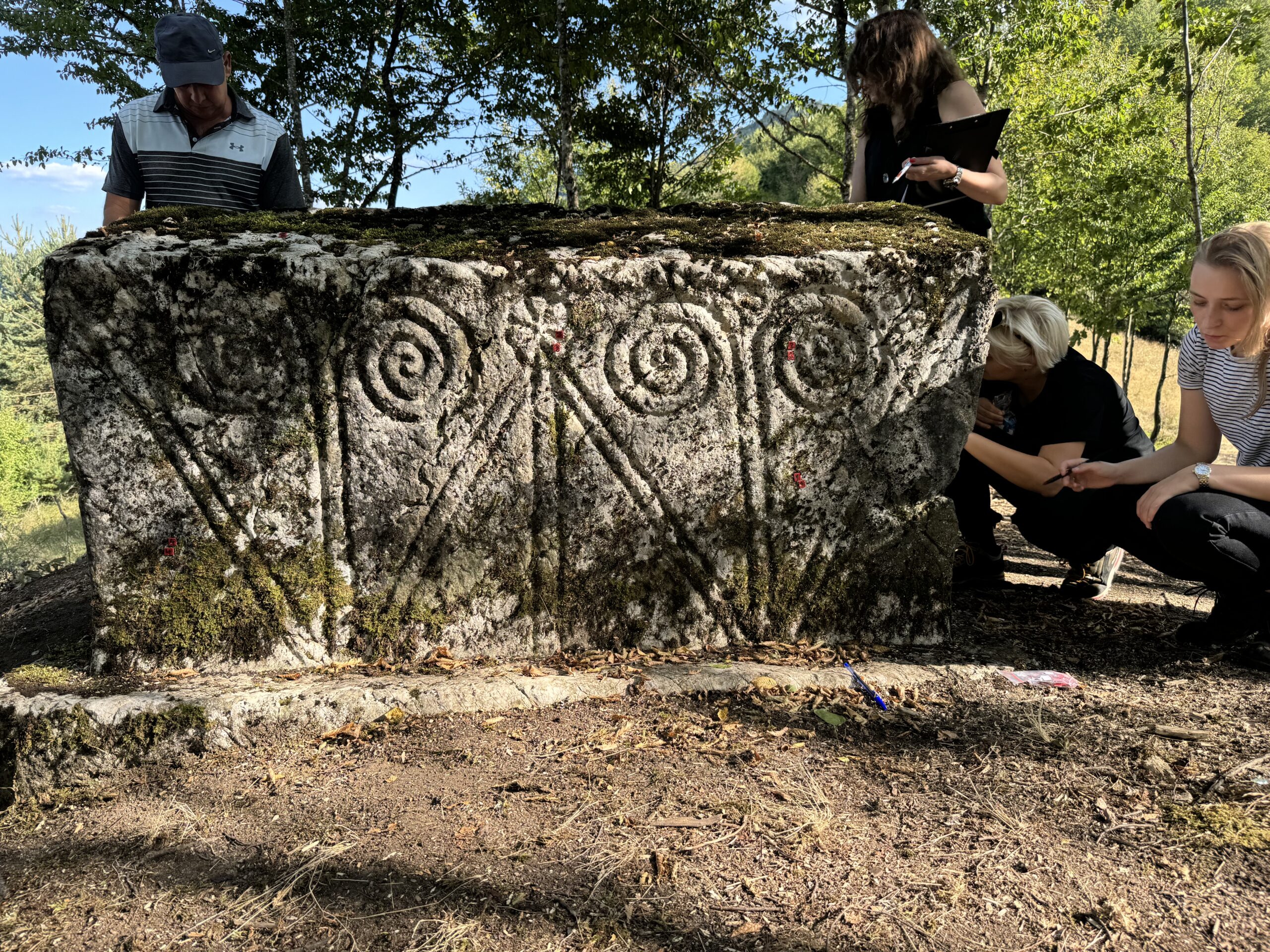Team and Methodology
The biodeteriogens assessment was carried out by a team of biologists and plant ecologists from the University of Sarajevo (UNSA) and the University of Novi Sad Faculty of Sciences (UNSPMF). The team was coordinated by Prof. dr Nusret Drešković and included Prof. dr Snežana Radulović, Prof. dr Samir Đug, Prof. dr Goran Anačkov, Prof. dr Adi Vesnić, as well as assistants Lejla Vesnić and Maja Novković. They implemented the bioassessment in rigorous compliance with the procedures defined in the newly developed STECCI Biodeteriogens Assessment Field Survey Protocol, together with the previously developed STECCI Biodeteriogens Assessment Lab protocol. This comprised laboratory-based microbiological, molecular, and morphological identification procedures undertaken in mutually affiliated biological laboratories and herbariums. A separate sampling strategy was employed, collecting two samples from every species. This dual-sample strategy was designed to allocate one specimen to morphological and the other for molecular and microbiological identification.
According to the BA Field Protocol (https://stecci.emdesk.com/#!/documents/all/WP3), each species was assessed using an adapted Braun-Blanquet scale for species coverage and spatial arrangement. Further biodiversity impact-relevant data were also evaluated, such as the monument’s space orientation, soil type code, slope, elevation, Land Use according to CORINE codes, Habitat Type as per EUNIS code, monument shape and dimensions, and Köppen’s climate code. Additionally, the STECCI vegetation database coding system was developed. Documentation of the process was set up using 3D Lidar depth camera technology, providing highly precise visual records and directly georeferenced in QGIS.
Site Specifics
Stećci Križevići is one of the 30 medieval stećak necropolises that were designated as UNESCO World Heritage Sites in 2016. The Križevići Necropolis is situated in the expansive valley region of the Krivaja River, Krivaja Kanyon, recognized for its moderately warm and humid climate with hot summers and no dry period, classified as Cfbx”s.
The Krivaja River is distinguished by the highest level of biodiversity within the entire Bosnian catchment. This region characterizes a remarkable diversity of relief, geological substrates, soils, and particularly flora, fauna, and vegetation. Following the confluence of the Bioštica and Stupčanica rivers, the Krivaja River forms near the town of Olovo, flowing through an impressive canyon approximately 300 meters deep, primarily composed of carbonate rocks. This area is one of the largest refugia of Tertiary flora and fauna in this part of the Dinarides.
The Cfbx”s climate characteristic, combined with the necropolis’s location in a forested area with high biodiversity, is expected to result in significant stecci stone coverage of biodeteriogens. In addition, this increased plant diversity can have a highly substantial impact, as certain species of woody plants can cause considerable physical damage, which in turn leads to biophysical and biochemical harm to limestone monuments. In forested areas, the conservation of limestone monuments is particularly challenging due to the impact of plant roots and their associated microorganisms, as woody species and trees are more harmful than herbaceous plants due to their larger and more invasive root systems. Roots can physically penetrate and erode the stone with their root systems, creating conditions that facilitate biological growth and chemical damage. Moreover, these roots can secrete acids that contribute to chemical weathering, while also retaining moisture against the stone, promoting physical weathering and erosion. This can result in the collapse, detachment, and damage of stone monuments (as referred to in the first photo in the gallery).
Plant roots perform a multitude of critical functions within ecosystems, including their interactions with a range of microorganisms, some of which are detrimental, while others are beneficial to the plant. One of the most significant symbiotic relationships is with fungi, known as mycorrhizae. This symbiosis is crucial for the health and growth of many plants and can influence the condition of limestone monuments. Mycorrhizal fungi, which enhance the plant’s ability to absorb water and essential nutrients, can also play a role in this process. While they improve soil structure and plant health, they can also contribute to the deterioration of stone surfaces by facilitating the growth of plant roots and other microorganisms. More importantly, these fungi collect and retain water in the soil, which can increase moisture levels around the stone, further promoting weathering and erosion.
Understanding the growth characteristics of these biological colonizers and their interactions with stone substrates is crucial for assessing biodeterioration, particularly in forested environments where these processes are intensified. Effective conservation strategies must consider the complex interactions between plant roots, fungi, and the stone substrates of monuments. This includes managing the surrounding vegetation to minimize root penetration and moisture retention, thereby reducing the risk of physical and chemical damage to the monuments.

